55,000-year-old human skull
- Share via
Scientists say 55,000-year-old skull fragment may be the missing piece of a larger puzzle that shows how Neanderthals and modern humans mixed their genes.
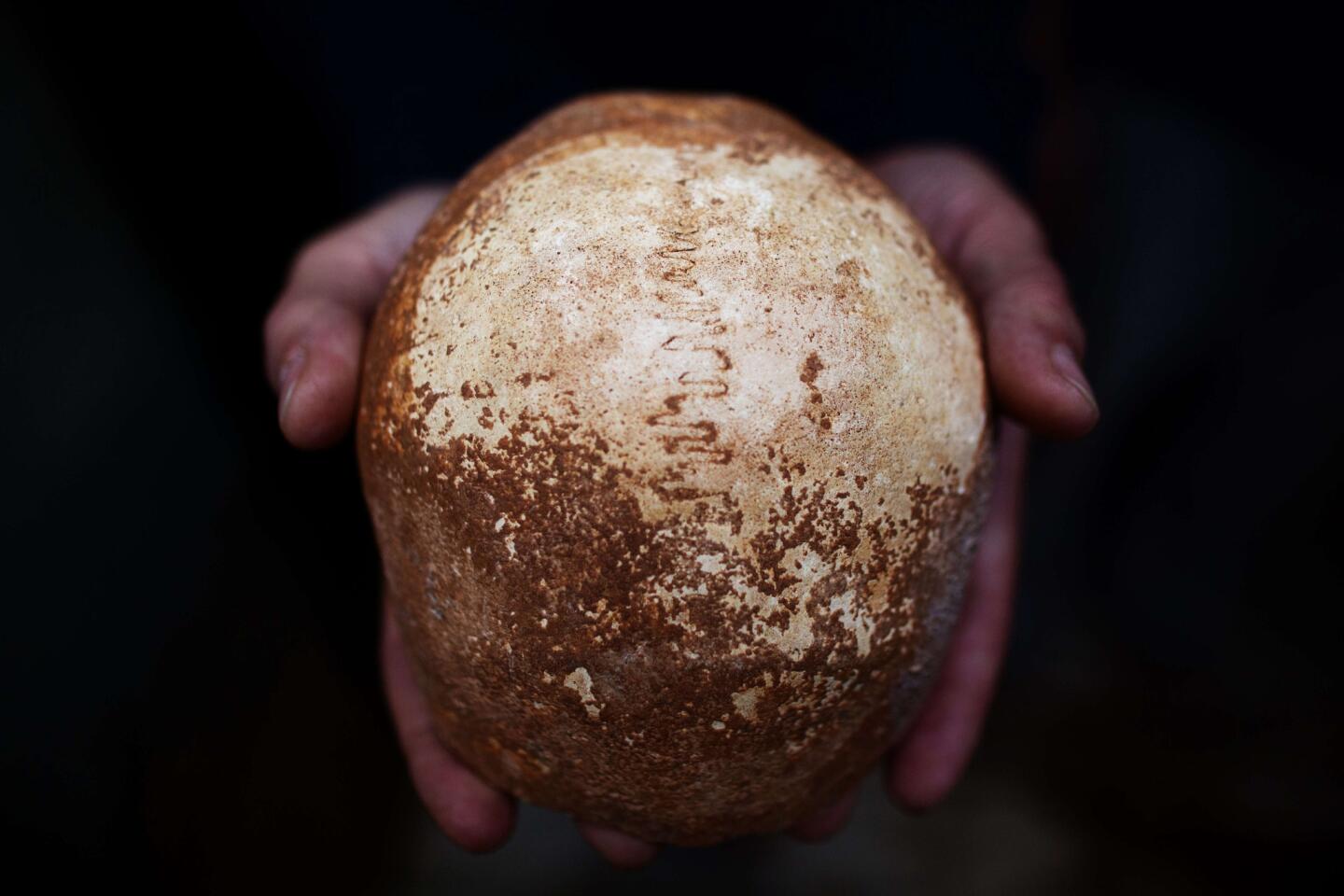
A 55,000-year-old partial skull found in the Manot Cave in Israel may constitute evidence that early humans migrated from Africa and interbred with Neanderthals in the Middle East before moving on to Europe. (Menahem Kahana / AFP/Getty Images)
Scientists say 55,000-year-old skull fragment may be the missing piece of a larger puzzle that shows how Neanderthals and modern humans mixed their genes.
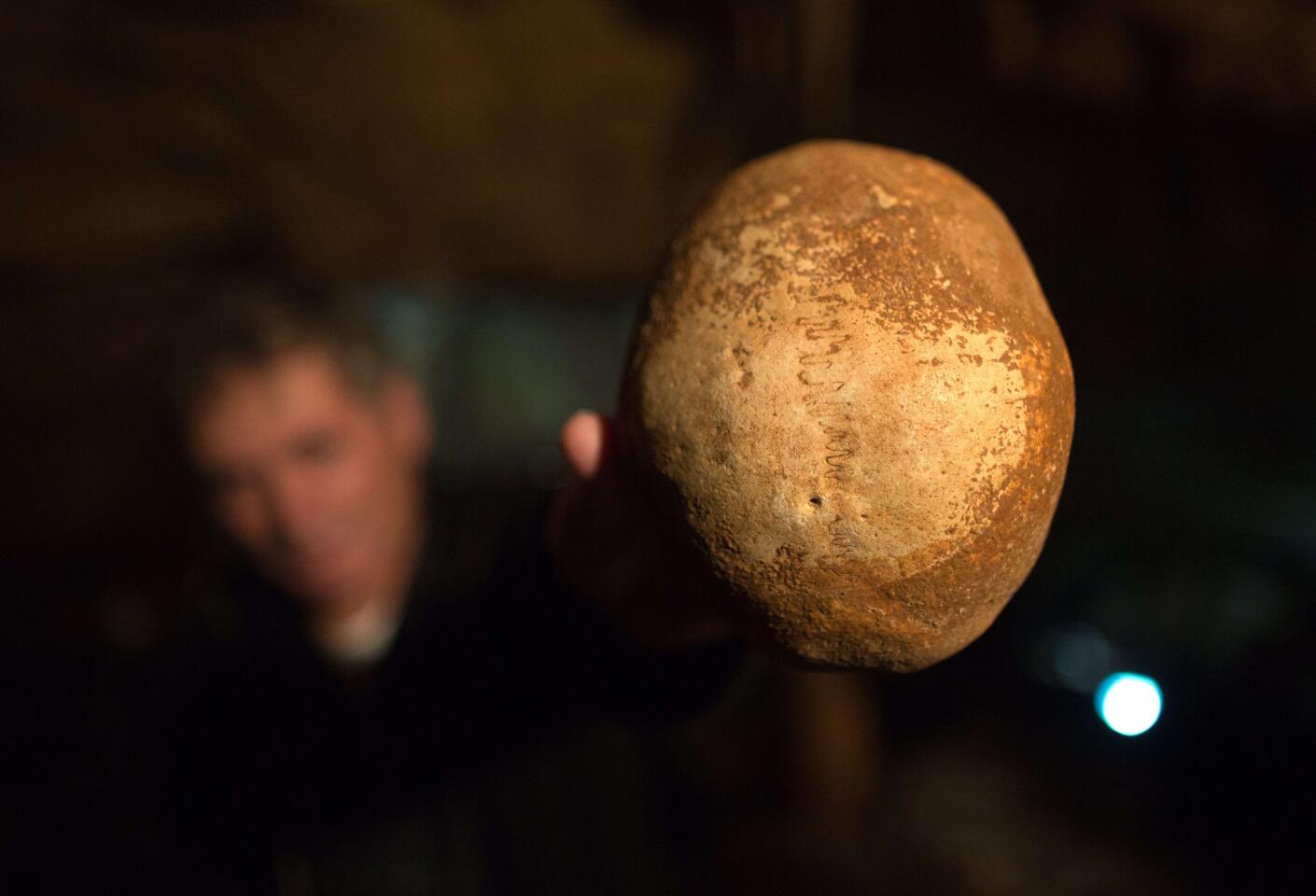
Anatomy professor Israel Hershkovitz, lead author of the study, said of the skull fragment, “This is the first specimen that connects the continents.” (Menahem Kahana / AFP/Getty Images)
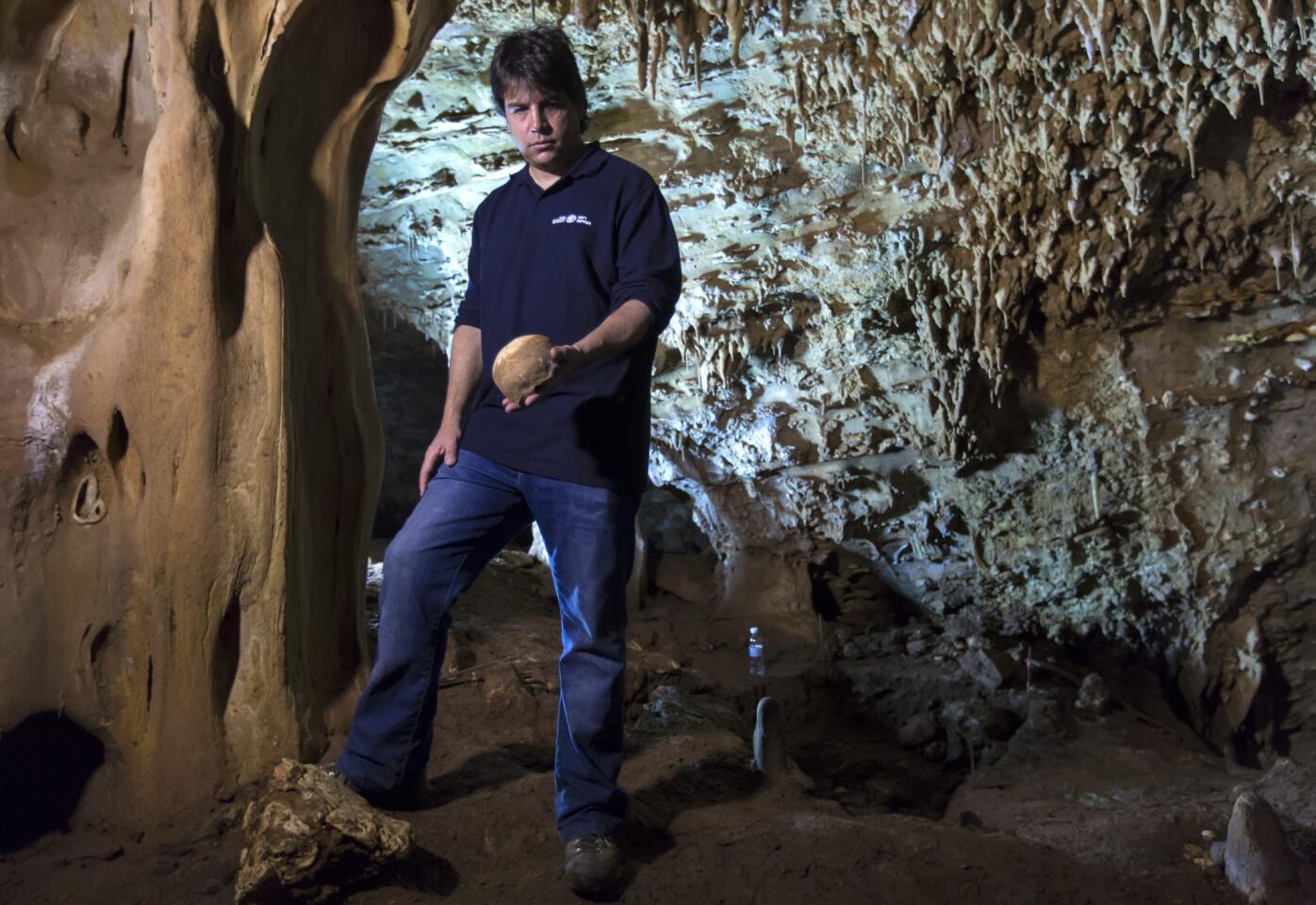
Dr. Omri Barzilai of the Israeli Antiquities Authority holds the partial skull inside the Manot Cave in northern Israel. (Jim Hollander / EPA)
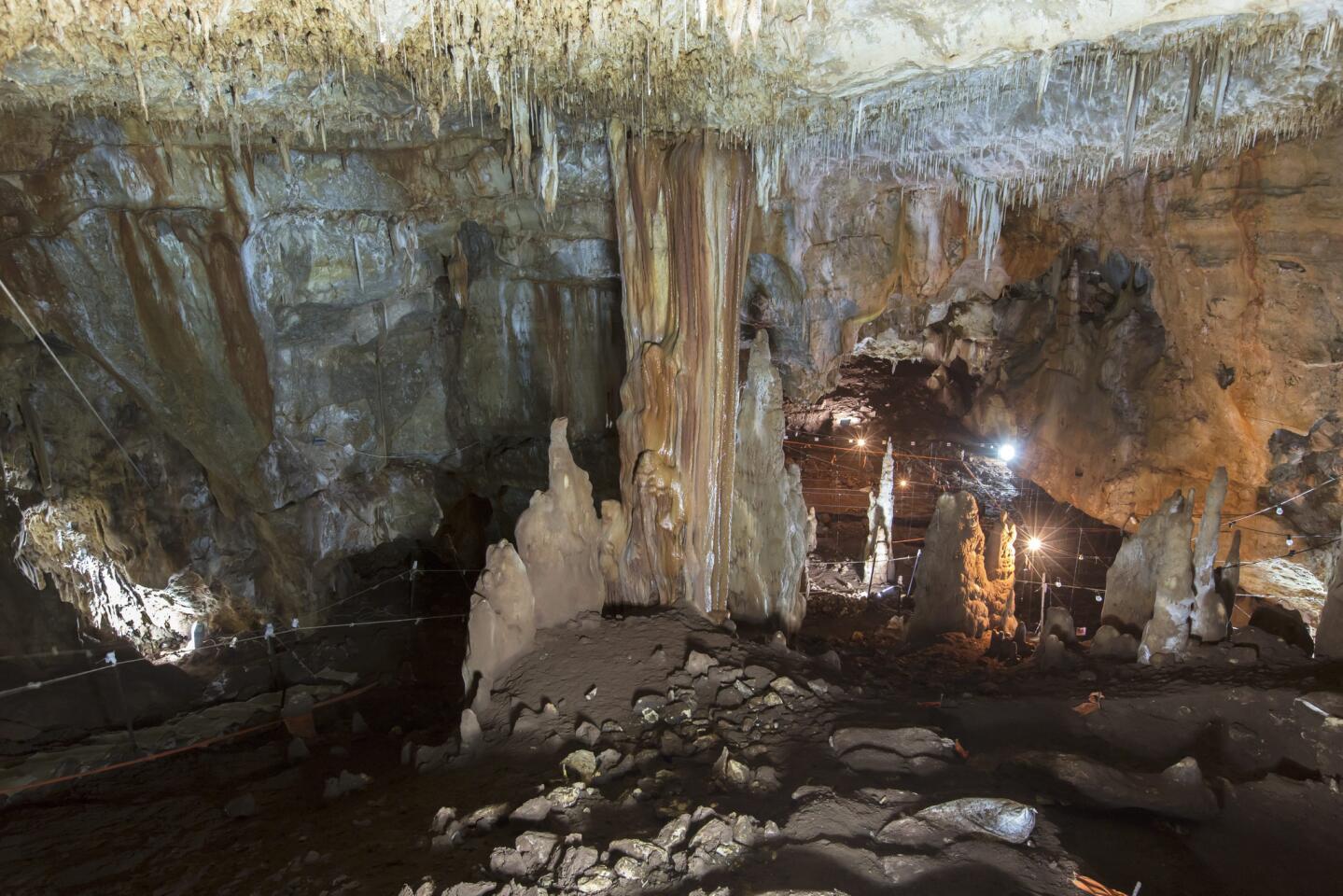
An interior view shows stalagmites rising from the floor and stalactites hanging from the ceiling in a chamber of Manot Cave. (Jim Hollander / EPA)
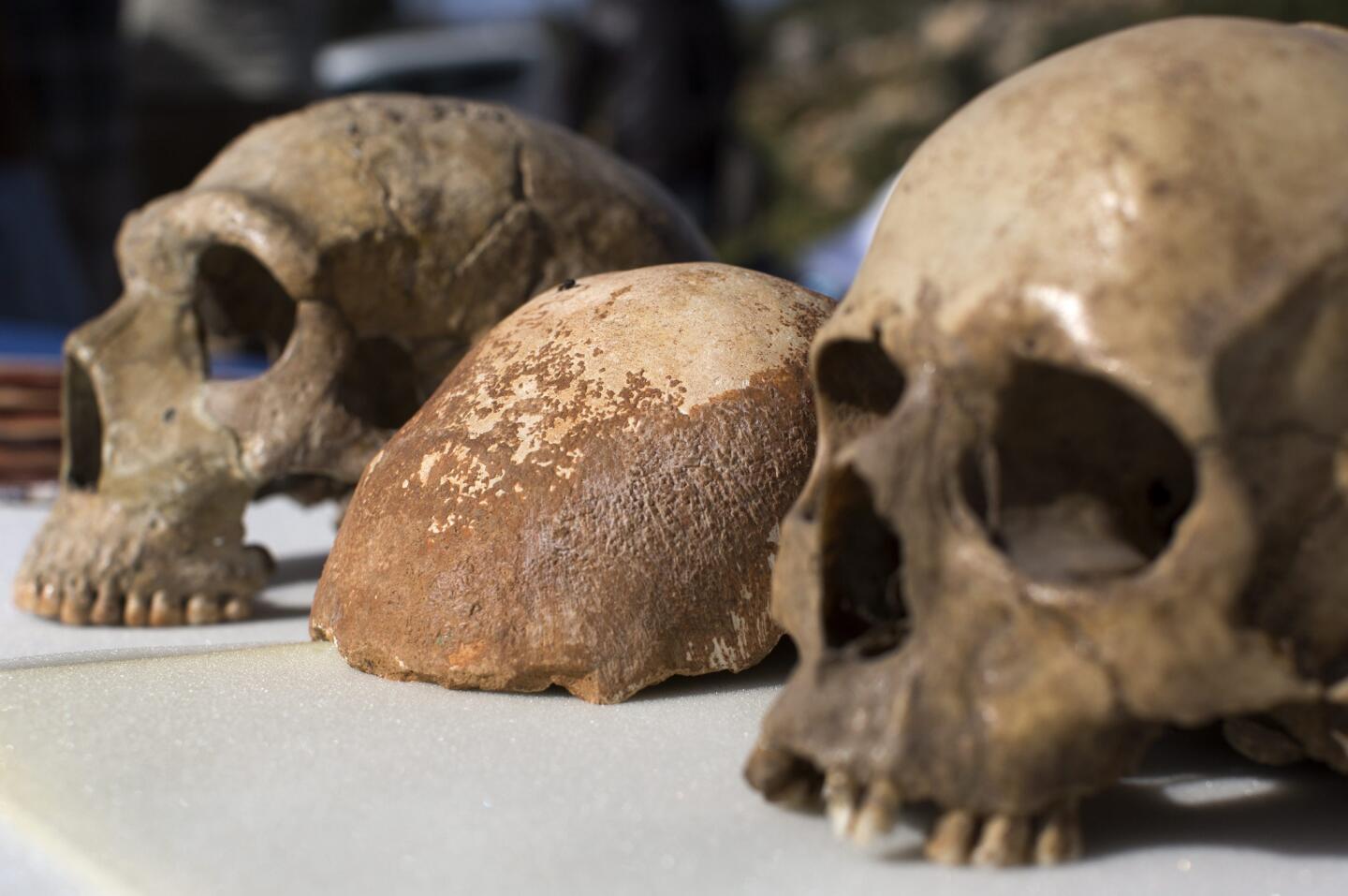
he 55,000-year-old partial skull found in Manot Cave, center, is placed between a Neanderthal skull, left, and a complete modern human skull outside the cave in northern Israel. (Jim Hollander / EPA)